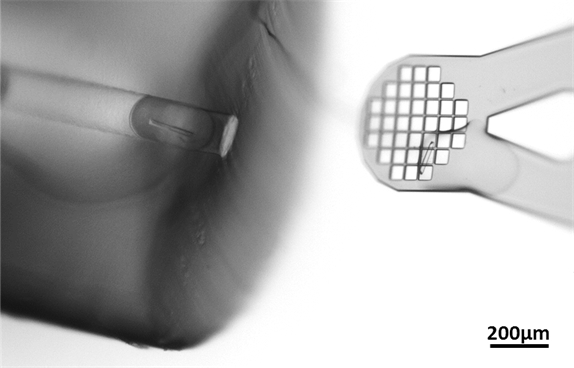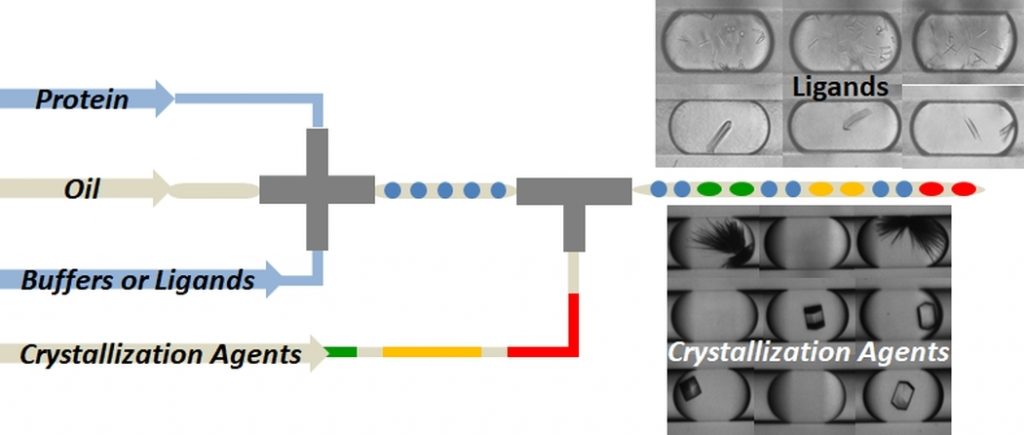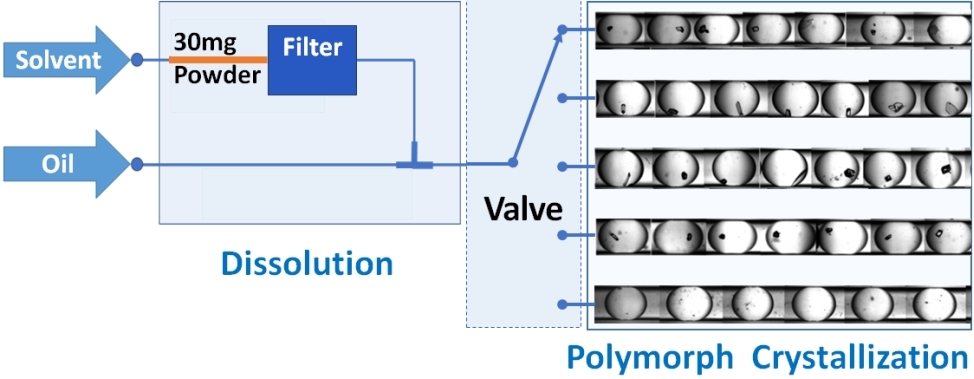Project: Crystallization and Drug Design
Crystallization and Drug-Design are intimately linked: obtaining crystals with structural purpose, co-crystallization and research of new crystal phases.
Crystals with structural purpose: A microfluidic platform was used to address the problems of obtaining diffraction-quality crystals and crystal handling during transfer to the X-ray diffractometer. Crystallization conditions of a protein of pharmaceutical interest were optimized and X-ray data were collected both in situ and ex situ.

Co-crystallization: The addition, to the microfluidic platform, of a "chemical library" containing crystallization agents and/or ligands" is explored for the crystallization or co-crystallization of a protein, with the objective of designing drugs based on the structure-activity relationship. This platform mixes aqueous phases (containing the protein and the crystallization agent) and organic phases (containing the ligand), during the droplet generation and circulation without using any surfactant. The droplet composition is controlled by the respective flow-rates of the different solutions, and checked by measuring on-line absorbance. The low volumes involved in the crystallization trials, the speed of execution and the absence of a microfabrication stage make our platform a cheap, easy-to-use and versatile tool for crystallization studies.

Research of new crystal phases: We describe a microfluidic platform for solid phase screening using extremely small quantities of raw materials. On the basis of our previous setup for solubility measurement that generates saturated solutions directly from powder, the platform requires no solution in excess of that used for the droplet-crystallization experiment. The setup is compatible with most solvents and molecules without using surfactant. Using this microfluidic platform, we first measured the solubility of sulfathiazole in water, isopropanol, and acetonitrile. Second, we performed a polymorph screening of sulfathiazole using as little as 30 mg of raw material, for numerous identical cooling crystallization experiments from 80 to 10 °C. In the experiments presented, we obtained the three usual polymorphs of sulfathiazole. We show that this economical approach yields reliable information on the probability of nucleation of a given polymorph, which is useful in pharmaceutical development.

